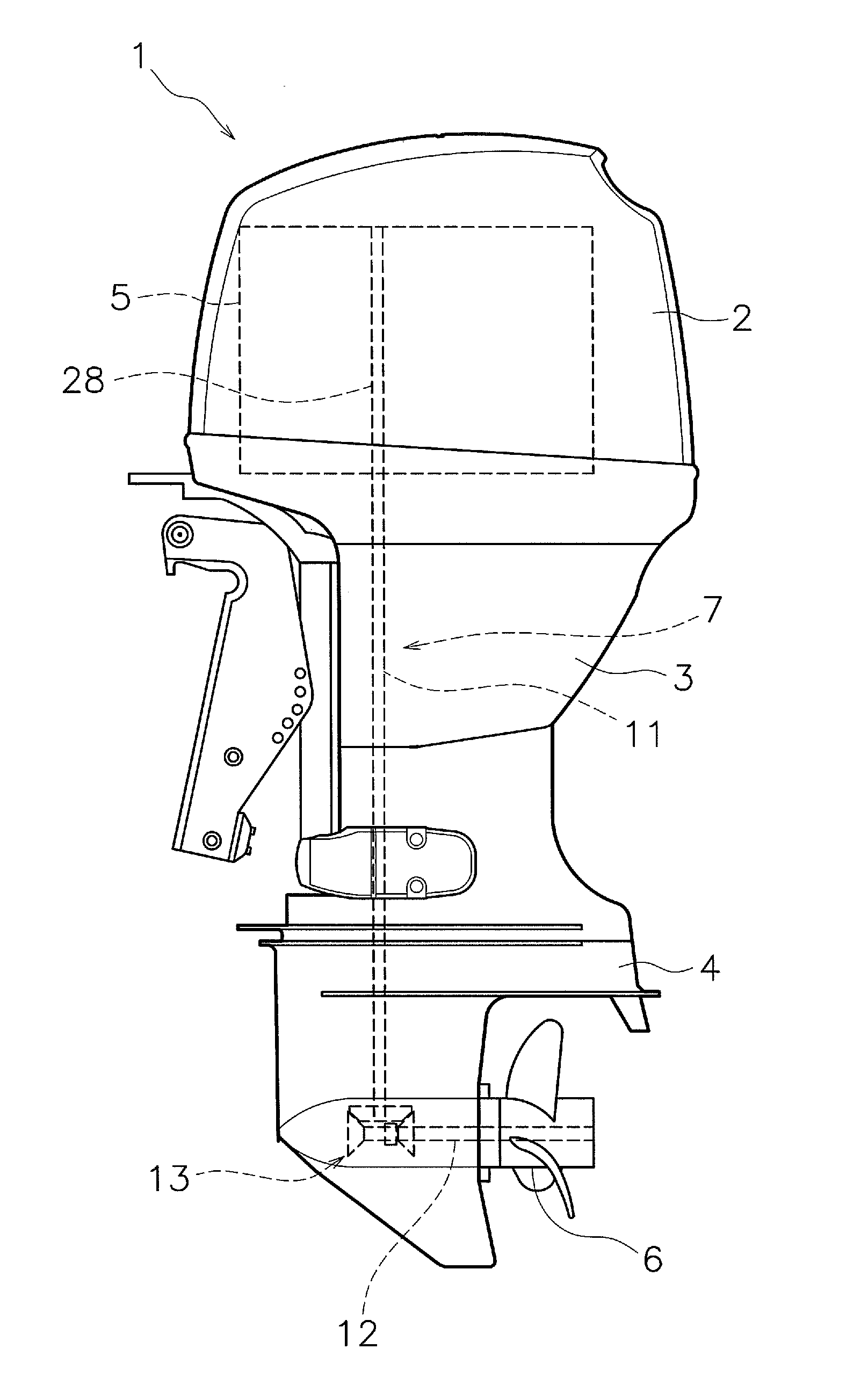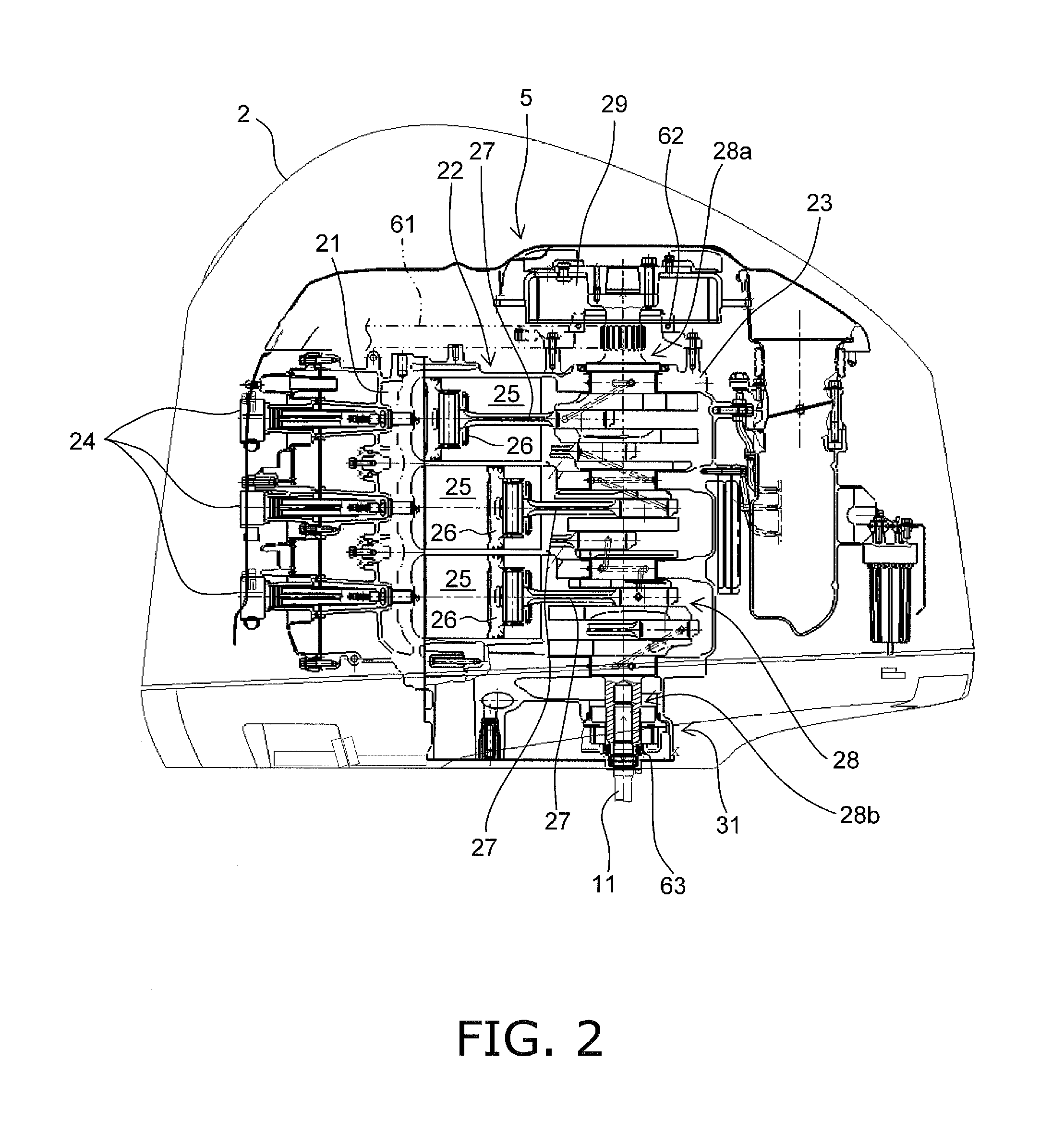Marine propulsion device
a propulsion device and a technology for boats, which are applied in the direction of pivots, bearings, shafts and bearings, etc., can solve the problems of increasing the load acting on the crankshaft, increasing the weight of the crankshaft, and the manufacturing cost cannot be kept low, so as to improve the corrosion resistance of the crankshaft, increase the size of the crankshaft, and enhance the strength of the crankshaft
- Summary
- Abstract
- Description
- Claims
- Application Information
AI Technical Summary
Benefits of technology
Problems solved by technology
Method used
Image
Examples
Embodiment Construction
[0024]Explanation will be hereinafter provided for a marine propulsion device 1 according to exemplary preferred embodiments of the present invention with reference to the attached drawings. FIG. 1 is a side view of the marine propulsion device 1. The marine propulsion device 1 includes an engine cover 2, an upper casing 3, and a lower casing 4. The upper casing 3 is disposed below the engine cover 2. The lower casing 4 is disposed below the upper casing 3. The marine propulsion device 1 includes an engine 5, a propeller 6, and a power transmission mechanism 7. The engine 5 is disposed in the upper portion of the marine propulsion device 1. The engine 5 is disposed within the engine cover 2. The propeller 6 is disposed in the lower portion of the marine propulsion device 1. The propeller 6 is attached to the lower casing 4. The propeller 6 is configured to be driven and rotated by a driving force of the engine 5.
[0025]The power transmission mechanism 7 is configured to transmit the ...
PUM
 Login to View More
Login to View More Abstract
Description
Claims
Application Information
 Login to View More
Login to View More - R&D
- Intellectual Property
- Life Sciences
- Materials
- Tech Scout
- Unparalleled Data Quality
- Higher Quality Content
- 60% Fewer Hallucinations
Browse by: Latest US Patents, China's latest patents, Technical Efficacy Thesaurus, Application Domain, Technology Topic, Popular Technical Reports.
© 2025 PatSnap. All rights reserved.Legal|Privacy policy|Modern Slavery Act Transparency Statement|Sitemap|About US| Contact US: help@patsnap.com



